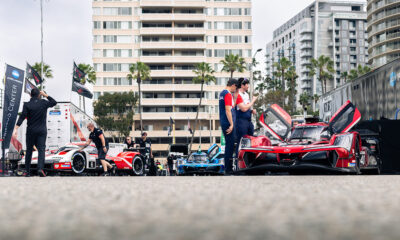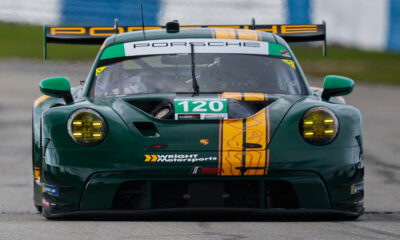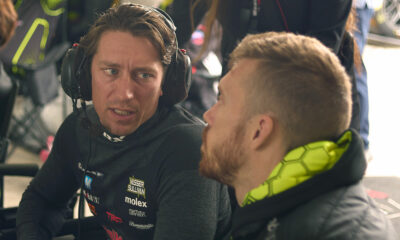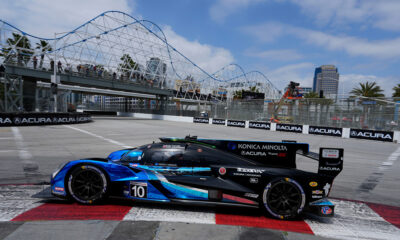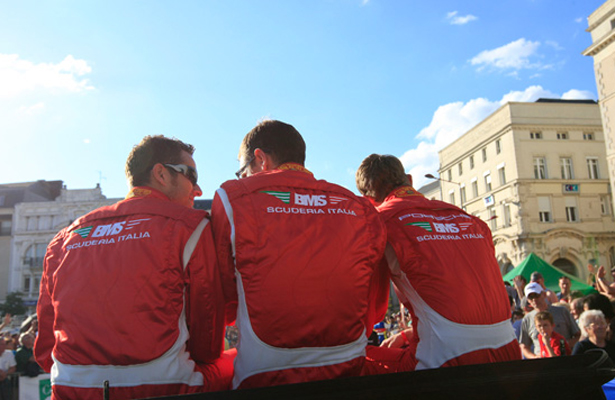
Photo: BMS Scuderia Italia
The melting pot of international sports car competition brings together a wide array of drivers, teams, engineers and crews, especially at the 24 Hours of Le Mans. Communication is obviously key, especially within teams drawn together for a single race.
While English is the unofficial (primary) language of international motorsports, driver Richard Westbrook of Great Britain knows that not all English is that spoken by loyal subjects of the Queen. For example, there are Americans.
The Italian Team
In 2010, the proud Brescia, Italy based BMS Scuderia Italia team of Giuseppe Lucchini had an automatic entry for the Le Mans 24 Hours by virtue of its second place finish in GT2 the previous year. They entered a Ferrari F430 GT2.
But in the weeks that followed, Lucchini, part of a major Italian industrial family, became unhappy with Ferrari. He acquired and entered a new Porsche 911 GT3 RSR.
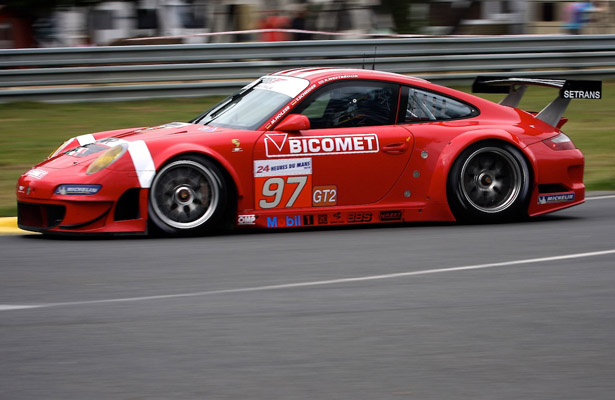
Photo: John Dagys
The German Car
Powered by the latest evolution of the flat-six, the new 997-based Porsche featured more hood vents and air channelings through the fascia and hood than its predecessor and was reportedly one of only two models with the 4 liter engine tuned to deliver more low end torque.
The car was assembled at Weissach on April 20 and entered at Le Mans with a pair of top German shoes, Timo Schneider and Marco Holzer, to join the British standout Westbrook. All three drivers were rookies at Le Mans.
The team took delivery of the car at Le Mans. A former Formula One team owner, Lucchini, made his displeasure with Ferrari clear, as the No. 97 Porsche carried the team’s traditional Ferrari red colors with a white stripe across the hood.
But the Italian team with the German and British drivers and an American engineer for the French tire company, Michelin, soon faced an unexpected challenge.
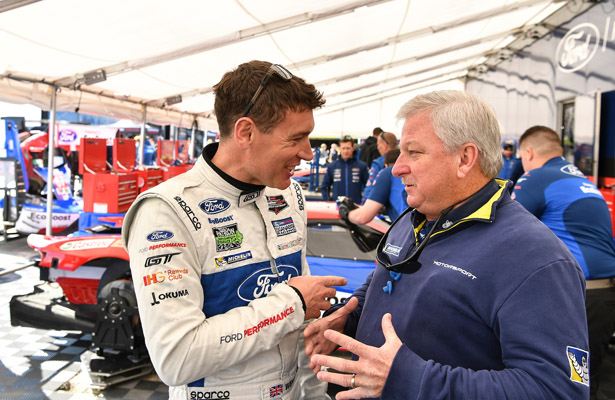
Photo: Michelin
The American tire guy
“I arrived at the track and all I had was the team name and garage number,” said Michelin engineer Robbie Holley of Ware Shoals, S.C., a small town of 2,700 people located in the rural NW corner of the state.
“I went down from the Michelin tire compound to the garage and started to introduce myself to the crew.
“They were all Italians and didn’t speak English. They just pointed at the team manager. I got with him and we sat down and had an espresso or whatever you call one of those little shots of caffeine. We talked for 15-20 minutes and we were good to go.”
English was the team’s language for radio communications, but as race week unfolded the Italian engineers had a difficult time understanding the German accented English of Holzer and Schneider.
Although he speaks with a distinct regional accent and Southern dialect, Holley, who does not speak a second language, emerged as the only one on the team who clearly understood the German drivers’ radio transmissions.
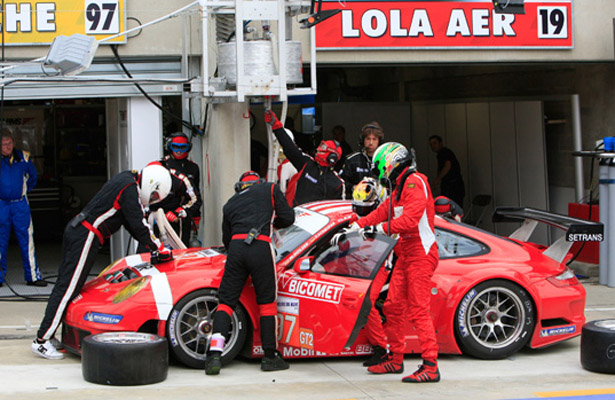
Photo: BMS Scuderia Italia
The British connection
Westbrook picks up the story: “So here we are at Le Mans, with the Italian team and engineers. When one of the German drivers said something on the radio, the Italian team manager would go to Robbie to translate.
“Robbie would tell him what they said and the team manager would respond to the driver; ‘Copy.’ It was the funniest thing.”
In World War II, the British used a secret weapon, dubbed the Enigma machine, in an Allied operation called Ultra to break the German codes.
At Le Mans in 2010, the American, Holley, became the Italian team’s code breaker for translating the English language radio communications used by its own German drivers.
“Robbie could understand the Germans and the Italians could understand Robbie. We still laugh about that from time to time,” said Westbrook. “I still struggle to understand Robbie’s English!”
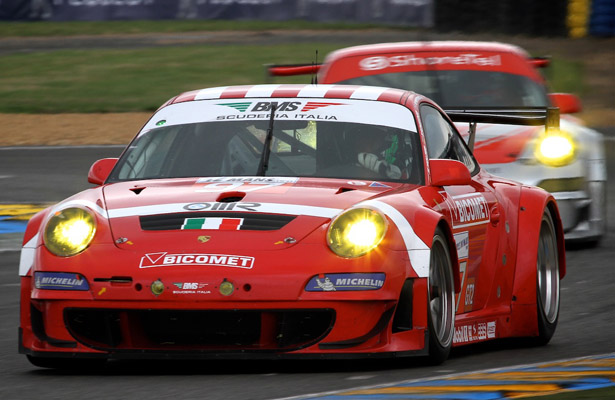
Photo: John Dagys
The Podium
There were seven manufacturers; Corvette, Ferrari, Porsche, BMW, Jaguar, Aston Martin and Spyker, entered in the GT2 class at Le Mans that year.
While the translation process may have been a bit slow, the car was plenty fast, finishing 14th overall and third in GT2 despite running the final three hours on just five cylinders.
“Everyone understands ‘podium,’” laughed Westbrook, who ironically stood on the same step of the podium at Le Mans this past June with his Ford CGR teammates. Ryan Briscoe and Scott Dixon.
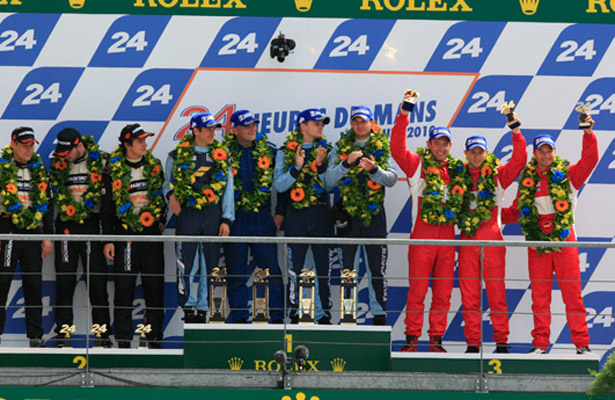
Photo: BMS Scuderia Italia
Post Script
Surprisingly the BMS Porsche raced only twice more, winning its class and winning the 2010 24 Hours of Spa with Martin Rattinger, Wolf Henzler, Joerg Bergmeister and Romain Dumas driving.
The car then won the 2011 Monza Trofeo before being completely rebuilt by the team and put into the personal collection of a team benefactor.
After being stored in the private collection for several years the car was sold by Sotheby’s at auction in Paris this past February for 470,000 Euros.
It seems fitting that the German car, raced by the Italian team, was sold in France by the British auction house. Like ‘podium,’ money is after all a universal language.
“The thought of our ‘Ware Shoals Robbie’ being the ‘translator’ for the Italians, Germans and Brits in France is too funny for words,” said Chris Baker, director of Motorsport for Michelin North America.
“We have to translate half of Robbie’s phrases to our own French colleagues at every race.”



















